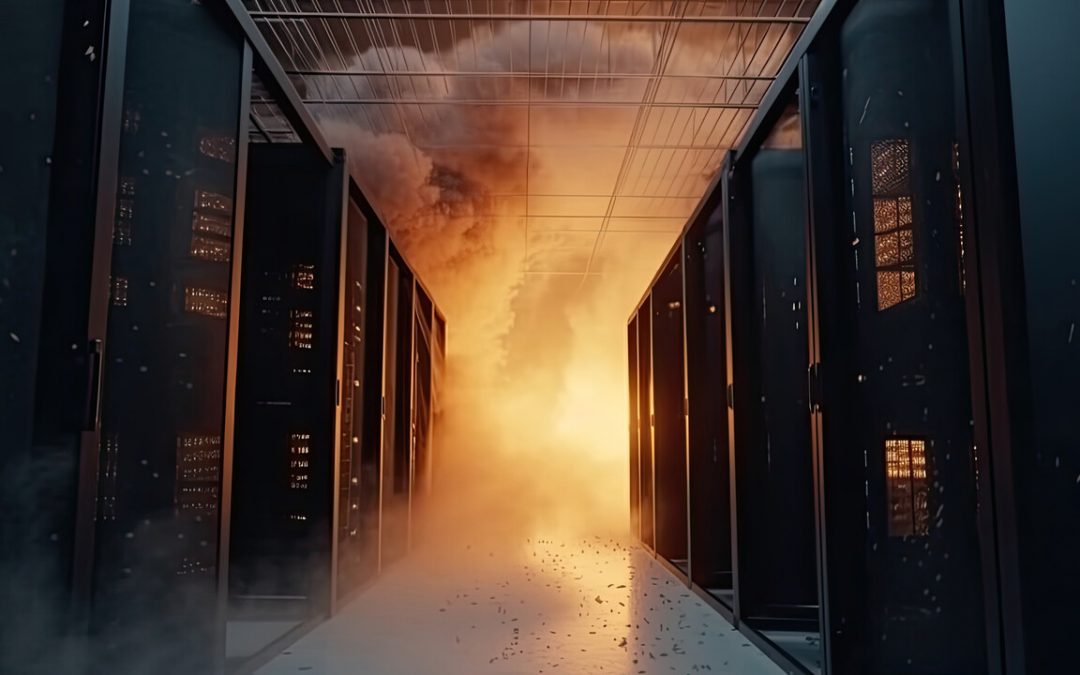Fire Hazards in Data Centers
Data centers are the backbone of today’s digital economy, housing critical systems and vast amounts of sensitive data. However, they are also susceptible to various risks, including fire hazards. Identifying potential fire hazards in data centers is crucial to prevent incidents that could lead to data loss, downtime, and significant financial damage. This article explores the common fire hazards in data centers and provides strategies for identifying and mitigating these risks.
Importance of Identifying Fire Hazards
Fire hazards in data centers can have catastrophic consequences. By identifying and addressing these risks early, data center operators can implement preventive measures, ensuring the safety of the facility and the continuity of operations. Proactive identification of fire hazards helps in maintaining regulatory compliance and protecting valuable assets.
Common Fire Hazards in Data Centers
1. Electrical Overloads
Electrical systems are a primary source of fire hazards in data centers. Overloaded circuits, faulty wiring, and malfunctioning equipment can generate excessive heat, leading to fires. Regular inspection and maintenance of electrical systems are essential to prevent these issues.
2. Overheating Equipment
Data centers operate continuously, generating significant heat. Inadequate cooling systems or failure of cooling equipment can cause overheating, increasing the risk of fire. Efficient cooling solutions and constant monitoring of temperature levels are vital.
3. Flammable Materials
The presence of flammable materials, such as paper, packaging, and cleaning supplies, can escalate fire risks. Proper storage and control of these materials are necessary to minimize hazards.
4. Human Error
Human error, such as improper handling of equipment, accidental damage, or neglecting safety protocols, can lead to fire incidents. Comprehensive training and strict adherence to safety procedures are crucial to reduce these risks.
5. Battery Storage
Data centers often use large battery banks for backup power. These batteries can pose fire risks if not managed properly. Proper maintenance and monitoring of battery systems are essential to prevent potential fire hazards.
Strategies for Identifying Potential Fire Hazards
1. Regular Inspections and Audits
Conducting regular inspections and audits of the data center can help identify potential fire hazards. These inspections should cover all aspects of the facility, including electrical systems, cooling equipment, and storage areas.
2. Advanced Fire Detection Systems
Implementing advanced fire detection systems, such as smoke detectors, heat sensors, and air sampling devices, can provide early warnings of potential fire hazards. These systems help in identifying issues before they escalate into major incidents.
3. Thermal Imaging
Thermal imaging cameras can detect hot spots in electrical systems and equipment, identifying potential fire hazards that are not visible to the naked eye. Regular thermal imaging scans help in early detection and mitigation of risks.
4. Environmental Monitoring
Environmental monitoring systems track temperature, humidity, and other environmental factors in the data center. These systems provide real-time data, allowing for the identification of conditions that could lead to fire hazards.
5. Risk Assessments
Performing comprehensive risk assessments helps in identifying potential fire hazards and vulnerabilities in the data center. These assessments should be conducted regularly and cover all aspects of the facility, from electrical systems to human activities.
6. Employee Training
Training employees on fire safety protocols and emergency response procedures is crucial. Regular training sessions and fire drills ensure that staff are prepared to identify and respond to fire hazards effectively.
7. Proper Storage Practices
Ensuring that flammable materials are stored properly and away from heat sources can significantly reduce fire risks. Implementing strict storage guidelines and regularly auditing storage areas helps in maintaining a safe environment.
8. Maintenance of Backup Power Systems
Regular maintenance and monitoring of backup power systems, including batteries, are essential to prevent potential fire hazards. Proper management of these systems ensures they operate safely and effectively.
Conclusion
Identifying potential fire hazards in data centers is a critical step in preventing fire incidents and ensuring the safety and security of the facility. By conducting regular inspections, implementing advanced detection systems, performing risk assessments, and training employees, data center operators can proactively address fire risks.
Investing in comprehensive fire hazard identification and mitigation strategies not only protects valuable assets but also ensures business continuity and regulatory compliance. As data centers continue to play a pivotal role in the digital economy, prioritizing fire safety is more important than ever.
Ensuring the proactive identification of fire hazards is a crucial step toward maintaining a resilient and secure data center infrastructure. Stay ahead of potential risks with vigilant monitoring and robust safety protocols, safeguarding your data center against fire hazards.
FESDES provides you with the latest design solutions and engineering best practices while helping to determine applicable codes and standards. We comply with the national codes and standards, engineering best practices, performance-based consulting, and fire & life safety audit criteria. Please do not hesitate to call us for more details. We offer comprehensive fire safety consultation tailored to meet the unique needs of your data center. Call us at +6017-2534211 / +6017-2534211or email at [email protected]

